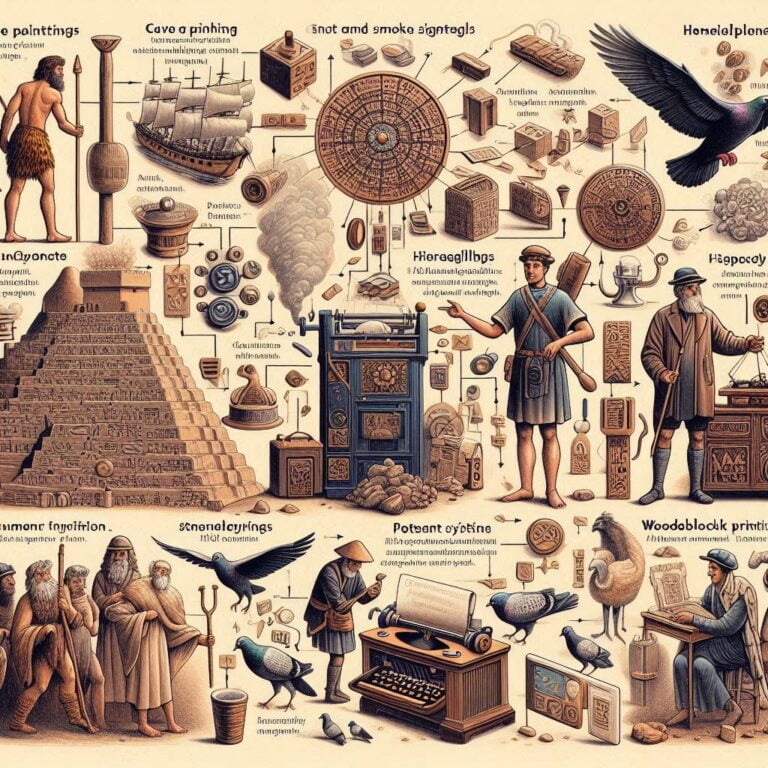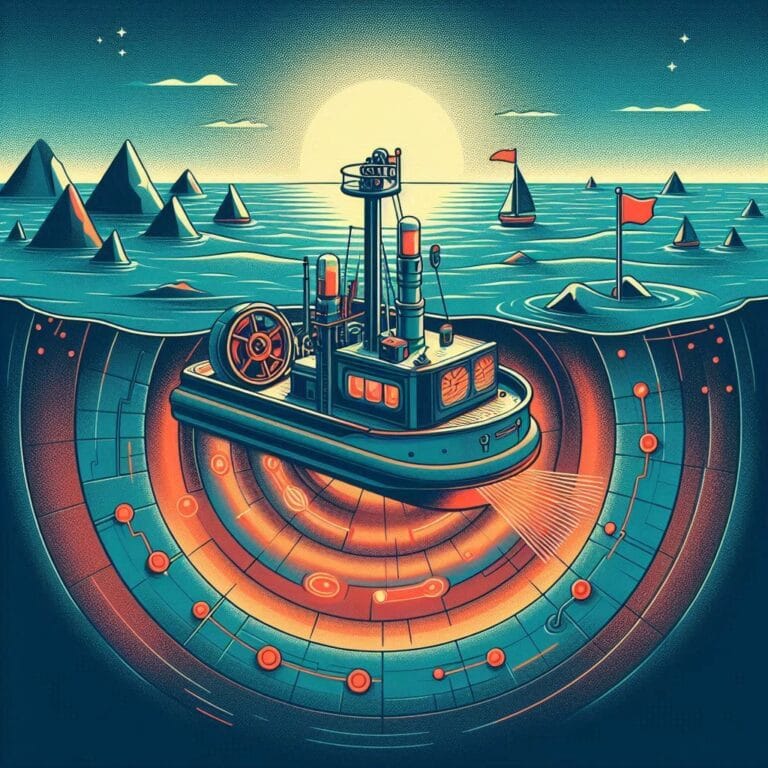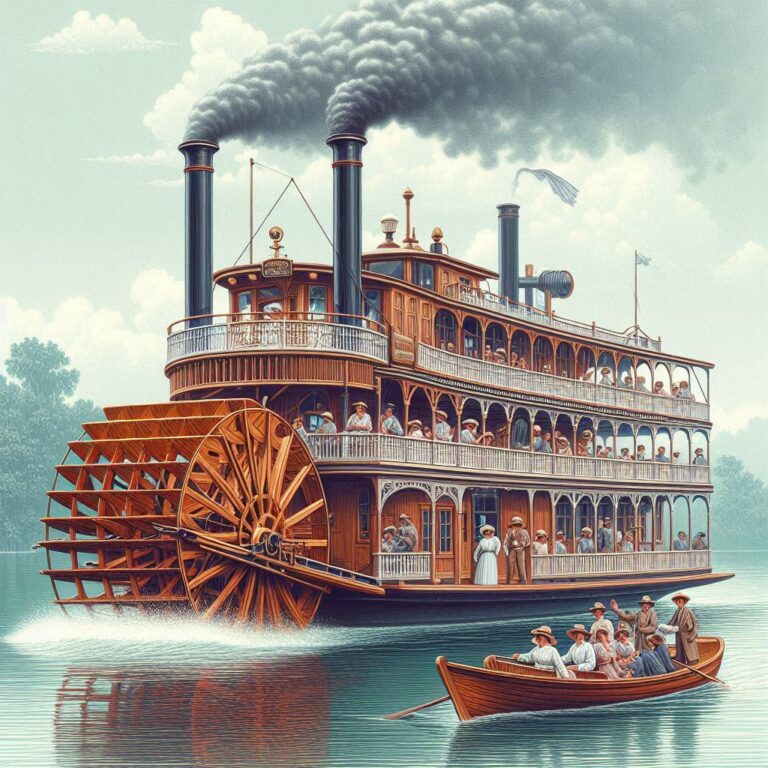The Fascinating Journey Through the History of Sailing
The history of sailing is a captivating tale of human ingenuity, perseverance, and a relentless quest to conquer the seas. For thousands of years, ancient mariners relied on the power of the wind to navigate uncharted waters, laying the foundation for trade, exploration, and cultural exchange. From the humble beginnings of primitive rafts to the sophisticated vessels of modern times, sailing has been a cornerstone of maritime history and a driving force behind the evolution of civilization.
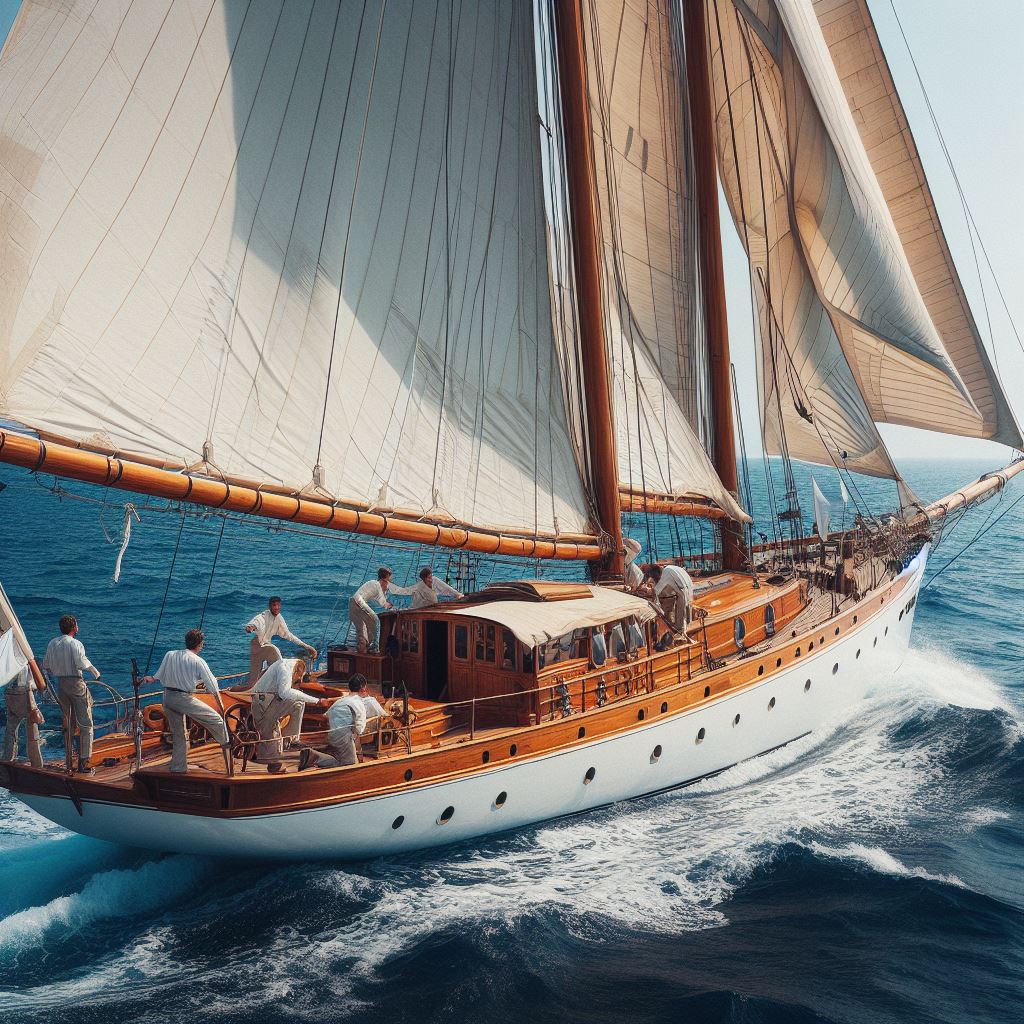
How Sailboats Work: The Science and Technology Behind Sailing
Sailboats are marvels of engineering that harness the natural forces of wind and water to move across the water. Understanding how a sailboat works requires diving into the principles of aerodynamics and hydrodynamics, as well as exploring the advancements in sailing technology throughout maritime history.
The Working Principle of a Sailboat
At the heart of a sailboat’s operation are its sails, which function much like the wings of an airplane. When wind flows over the curved surface of the sails, it creates a pressure difference: lower pressure on the convex side (the side facing away from the wind) and higher pressure on the concave side (the side facing the wind). This phenomenon, known as the Bernoulli principle, generates lift, which propels the boat forward.
To steer the boat and optimize its speed, the rudder and keel play essential roles. The keel, a fin-like structure beneath the boat, counters sideways forces from the wind and stabilizes the vessel. Meanwhile, the rudder, controlled by the helm, directs the sailboat’s course by altering the flow of water beneath the hull.
Sailing Against the Wind
A fascinating aspect of sailing is the ability to travel against the wind. By angling the sails and zig-zagging in a pattern called tacking, sailors can generate forward motion using the lift created by the wind’s interaction with the sails. This maneuverability revolutionized maritime travel and played a pivotal role in the history of ships and boats, enabling exploration and trade across vast oceans.
Evolution of Sailing Technology
Throughout the history of sailing, advancements in sailing technology have transformed sailboats from simple wooden vessels to sophisticated yachts. Early civilizations, such as the Phoenicians and Egyptians, used square sails for downwind travel. Over time, innovations like triangular lateen sails allowed greater control and versatility, propelling the development of global maritime routes.
The evolution of sailing not only influenced maritime history but also contributed to the growth of empires and economies. Modern sailboats now incorporate lightweight materials, advanced navigation systems, and eco-friendly designs, merging centuries of tradition with cutting-edge technology.
Why Understanding Sailboat Mechanics Matters
Understanding how sailboats work bridges the gap between ancient ingenuity and modern innovation. It showcases humanity’s ability to adapt and optimize natural forces, offering insights into the enduring relationship between technology and the environment. From the humble beginnings of early vessels to today’s state-of-the-art yachts, the journey of the sailboat continues to inspire adventurers and engineers alike.
This deep connection between nature and innovation underscores why sailing remains a celebrated aspect of maritime history and a testament to human ingenuity.
Sailing History and Timeline
Prehistoric Times:
- Earliest Evidence: While definitive proof remains elusive, archeological evidence suggests the history of ships and boats as early as 100,000 years ago (ref: Nature, 2011). These early vessels, likely rafts or dugouts, were crucial for early human migration and resource acquisition.
- Sailing’s Origins: The exact date of sail development remains debated, with estimates ranging from 6,000 to 3,000 BCE (ref: Journal of Archaeological Science, 2016: ). Early sails were likely made from animal skins or woven plant materials, propelled by the wind and ancient mariners’ ingenuity.
4000 BCE:
- Reed Boats in Mesopotamia: The oldest known depictions of boats come from Mesopotamia around 4000 BCE, showcasing reed boats used for transportation and trade. These boats were often depicted carrying goods, highlighting the early importance of waterborne trade.
- Egyptian Reed Boats: Alongside Mesopotamia, ancient Egypt also saw the development of reed boats around 4000 BCE. These boats, often used for fishing and transportation on the Nile, were crucial for the development of Egyptian society.
In ancient Egypt and Mesopotamia, archaeological evidence suggests the use of reed boats as early as 4000 BCE. These early boats were constructed from bundles of reeds or papyrus bound together and were propelled by paddles or early forms of sails.
2000 BCE:
- Egyptian Sailboats: By 2000 BCE, ancient mariners from Egyptians had transitioned to sailboats, utilizing papyrus reeds for both hull and sail construction (ref:The Complete History of Ships and Boats). These sailboats, propelled by the Nile’s winds, were instrumental in trade, transportation, and even religious ceremonies.
- Sail Technology: Papyrus sails, while lightweight and maneuverable, had limitations. Studies suggest Egyptians experimented with other materials like matting and linen, paving the way for future sail development.
1200 BCE:
- Phoenician Innovations: Around 1200 BCE, the Phoenicians emerged as maritime powerhouses, credited with developing faster and more advanced sailboats (ref: The Phoenicians). Their innovations included longer hulls, improved rigging, and diagonally-set sails, enabling them to navigate across the Mediterranean and establish vast trade networks.
- Mediterranean Trade: Phoenician shipbuilding advancements not only benefited their own trade but also facilitated the exchange of goods and ideas across the Mediterranean, fostering cultural exchange and economic growth throughout the region.
1000 CE:
The Vikings weren’t just fearsome raiders; they were also master shipbuilders and navigators. Their iconic longships, with their shallow draft and versatile design, were capable of navigating treacherous coastlines, shallow rivers, and even the vast expanse of the Atlantic. This unique design, characterized by a slender hull, symmetrical ends, and a single mast with a square sail, offered several advantages:
- Maneuverability: The shallow draft allowed them to navigate close to shore and explore uncharted waters. Their oars provided propulsion even in calm conditions, making them independent of wind.
- Speed: The lightweight construction and efficient sail design enabled them to achieve impressive speeds, crucial for both raiding and exploration.
- Seaworthiness: Their clinker-built hulls, where planks overlapped like scales, offered strength and flexibility, making them weather-resistant and able to handle rough seas.
These innovations, combined with their advanced navigational techniques using the sun, stars, and even birds, allowed the Vikings to reach Iceland, Greenland, and even North America around 1000 CE, marking a significant feat in maritime exploration. (Ref: Gareth Rees, “The Vikings: A Very Short Introduction”)
11th century CE:
The Chinese invention of the magnetic compass around the 11th century CE was a game-changer for navigation. Before this, sailors relied heavily on celestial bodies and landmarks, which were unreliable at night or in cloudy weather. The compass, however, provided a constant and accurate reference point, revolutionizing maritime navigation.
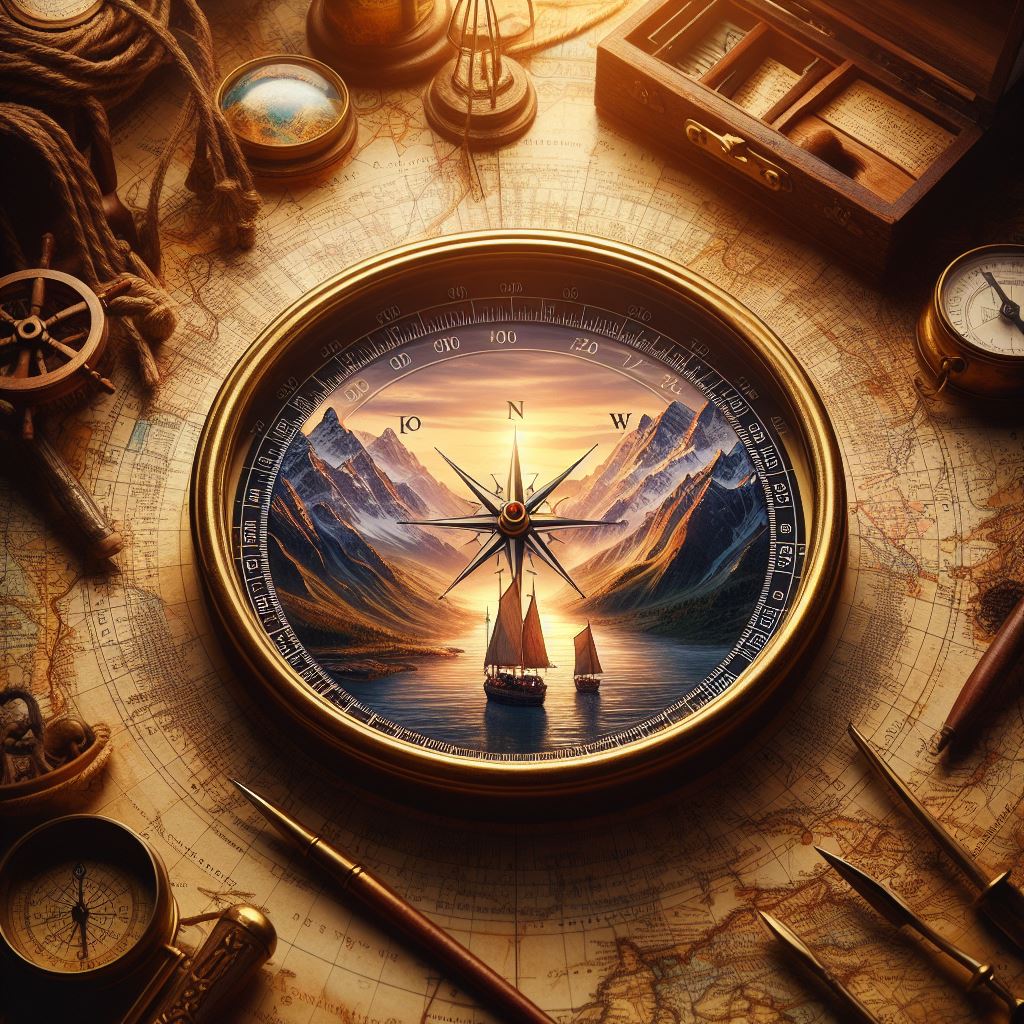
- Improved Navigation: The compass allowed sailors to determine their cardinal direction regardless of visibility, enabling them to venture further and explore unknown territories with greater confidence.
- Global Exploration: This newfound ability to navigate accurately across vast distances played a crucial role in later European voyages of exploration, including those by Columbus and Vasco da Gama.
- Technological Advancements: The compass continued to evolve, with the development of gimbals to stabilize it on moving ships and the inclusion of a wind rose to measure direction relative to the wind. (Ref: Joseph Needham, “Science and Civilization in China: Volume 4, Physics and Physical Technology”)
13th century CE:
The 13th century saw another significant Chinese innovation – the sternpost rudder. This replaced the earlier side rudders, which were less effective and limited maneuverability. The sternpost rudder, mounted at the stern of the ship, offered several advantages:

Increased Maneuverability: The rudder’s placement provided more control over the ship’s direction, allowing for tighter turns and improved responsiveness.
Enhanced Safety: Better maneuverability made ships safer, especially in challenging weather conditions or crowded waterways.
Long-Distance Voyages: This improved control was crucial for long-distance voyages, allowing sailors to navigate complex routes and changing weather patterns more effectively. (Ref: Lionel Casson, “The Birth of the Modern Ship“)
15th century CE:
Vasco da Gama’s historic voyage in 1497-1498 exemplifies the transformative power of these maritime innovations. He used a fleet of caravels, and Portuguese ships designed for long-distance voyages, incorporating elements from both Viking and Arab shipbuilding traditions. These ships featured a triangular sail plan, multiple masts, and improved navigation instruments, including the compass and astrolabe.
Rounding the Cape: By utilizing the compass and navigating around the southern tip of Africa, da Gama achieved the long-sought goal of finding a sea route to India, bypassing the overland trade routes controlled by the Ottomans.
Trade and Exploration: This feat opened up a new era of maritime trade and exploration, connecting Europe directly to the riches of Asia and paving the way for further European exploration and colonization.
Impact on History: Da Gama’s voyage had a profound impact on global history, shaping trade patterns, cultural exchange, and the course of European empires. (Ref: Sanjay Subrahmanyam, “The Vasco da Gama Exception: Empire, Trade, and the Indian Ocean in the Early Modern Age”)

16th-19th century CE:
Rise of Sail Warships: This era saw the rise of powerful galleons and ships-of-the-line, featuring multiple decks of cannons and intricate sail configurations. The Dutch, Spanish, and French navies initially competed, but the British Royal Navy emerged as the dominant force due to factors like:
- Standardization: The British adopted standardized ship designs and construction methods, ensuring consistent quality and fleet cohesion.
- Navigation: Pioneering advancements in navigation, like John Harrison’s chronometer, gave the British a significant advantage in global navigation.
- Training: The Royal Navy emphasized rigorous training and discipline, fostering a highly skilled and professional fighting force.
Famous Naval Battles: The Age of Sail witnessed several iconic naval battles that shaped history, including:
- Spanish Armada (1588): The decisive defeat of the Spanish Armada by the English solidified British naval dominance.
- Battle of Trafalgar (1805): Admiral Nelson’s tactical brilliance secured a resounding victory for the British against the combined French and Spanish fleet.
- Battle of Hampton Roads (1862): The CSS Virginia (“Merrimack”) became the first ironclad warship, revolutionizing naval warfare and marking the end of the Age of Sail.
Exploration and Trade: Beyond warfare, sailboats played a crucial role in exploration and trade during this period. Explorers like Vasco da Gama, Magellan, and Columbus used sailboats to navigate uncharted waters, opening new trade routes and expanding European empires.
18th century CE:
Captain James Cook: This renowned explorer undertook three major voyages in the Pacific between 1768 and 1779, charting vast areas of the ocean and documenting diverse cultures. His meticulous observations contributed significantly to:
- Geography: Cook’s accurate maps helped shape our understanding of the Pacific Ocean and its islands.
- Astronomy: He observed celestial bodies like the transit of Venus, aiding in the calculation of longitude and improving navigation accuracy.
19th century CE:
Steamboats and Steamships: The invention and development of steam engines in the 19th century marked a paradigm shift in maritime transportation. Steam-powered vessels offered several advantages over sailboats:
- Reliability: Steam engines were less reliant on wind conditions, allowing for more consistent and predictable travel.
- Speed: Steamships could travel significantly faster than sailboats, reducing journey times and boosting trade efficiency.
- Capacity: Larger steam-powered vessels could carry more cargo and passengers, further revolutionizing global trade and travel.
Decline of Sailboats: While sailboats continued to be used for leisure and some niche purposes, their dominance as the primary mode of transportation waned due to the undeniable advantages of steam power.
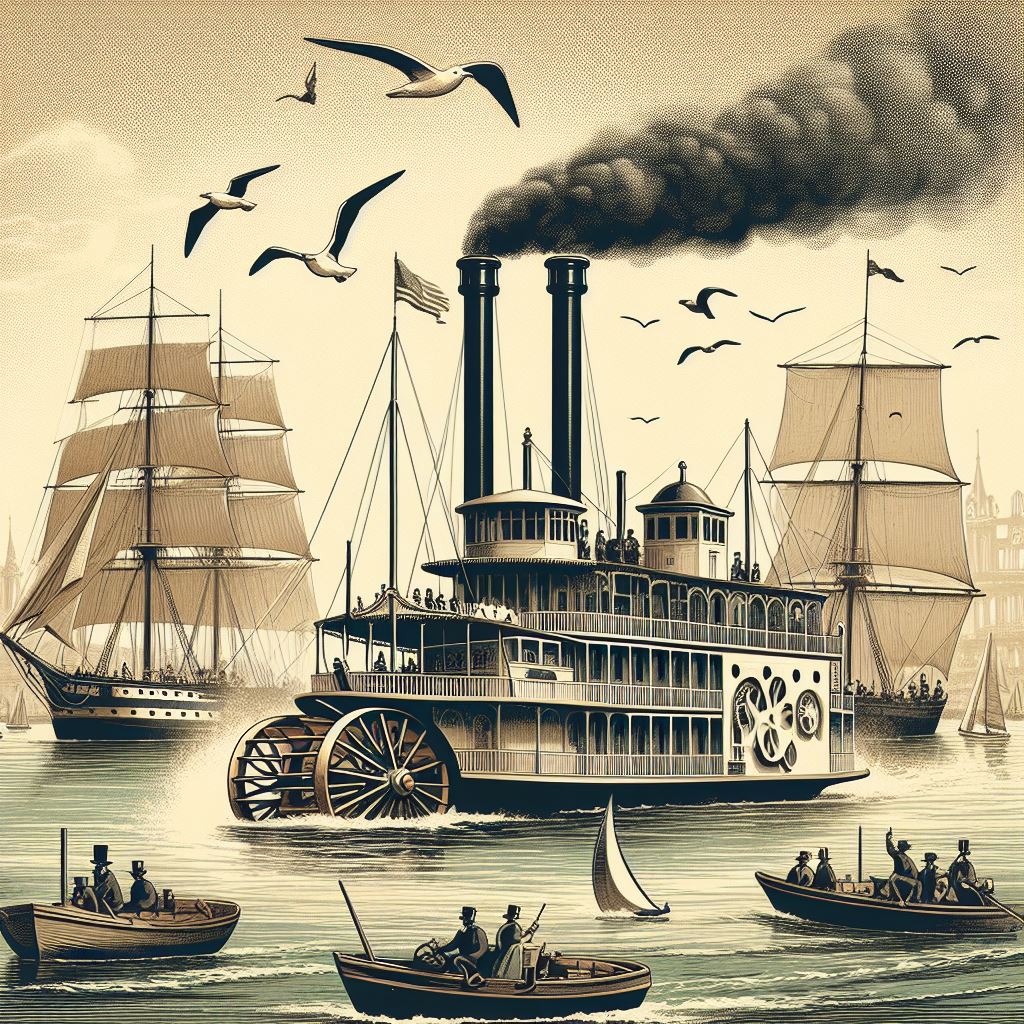
20th-21st century CE:
Modern Sailboats: Despite the shift to steam and motorboats, sailboats haven’t disappeared. Modern sailboats benefit from advancements in:
Materials: Lightweight and durable materials like fiberglass and carbon fiber have improved performance and efficiency.
Design: Sophisticated hull designs and sail technology optimize speed and maneuverability.
Technology: Electronic navigation systems and weather forecasting tools enhance safety and planning.
Recreational and Competitive Sailing: Today, sailboats are primarily used for recreational purposes, racing, and niche applications like research and eco-tourism. They offer a unique blend of challenge, exhilaration, and connection to the natural world.
Developments and Application
The actual origin of sailing in maritime history is still debatable but sailing records can be traced back to prehistoric times when humans first constructed rafts to cross rivers and waterways. The evidence of reed boats in ancient Egypt and Mesopotamia found by Archaeologists dates back to at least 4000 BCE. The ancient mariners Egyptians and Sumerians used reed boats or wooden boats to navigate the Nile, Tigris and Euphrates rivers, for travel and transport goods.
However, by the 2nd millennium BCE, humans learned to construct sailboats. The ancient Egyptians and Phoenicians started using sailboats for transportation and trade. The Egyptian ships were built with sails made of papyrus, while the Phoenician ships were faster and more advanced which allowed them to travel to longer distances to explore the new trade routes across the
Mediterranean.
With time, sailboats became increasingly developed, with improvements in technology and materials. The Vikings developed a unique technology to build ships that are easy to navigate in shallow waters and cross the Atlantic. The Chinese also important contributions to sailing technology, the magnetic compass invention and the sternpost rudder discovery.
Exploration and Colonizing the world
 |
| Portuguese explorer Vasco da Gama |
Sailboats, far from being mere vessels of leisure, were the wind-powered chariots that propelled humanity into uncharted territories, shaping the tapestry of exploration and colonization. Their billowing sails whispered tales of daring voyagers, groundbreaking discoveries, and the rise and fall of empires. Let’s delve into this captivating maritime saga, focusing on the iconic journeys of Vasco da Gama and the powerful legacy of the British Navy.
Vasco da Gama: Unveiling the Spice Route’s Secrets:
Imagine the year 1497. Vasco da Gama, a Portuguese explorer with a heart of steel and a thirst for adventure, sets sail from Lisbon. His mission: to navigate the treacherous waters around Africa, a feat attempted but unachieved by many before him. Armed with innovative caravels, equipped with lateen sails and multiple masts, da Gama braved the howling winds and churning seas, finally rounding the Cape of Good Hope. This wasn’t just a geographical milestone; it was a gateway to the lucrative spice trade, a source of immense wealth and power. Following the eastern coastline of Africa, da Gama finally reached Calicut, India, in 1498, forging a direct sea route between Europe and Asia. His daring voyage not only revolutionized trade but also unveiled the interconnectedness of the world, forever altering the global economic and political landscape.
Britannia Rules the Waves: An Empire Forged on Sail:
Fast forward to the 16th and 17th centuries. The British Navy, fueled by advancements in shipbuilding and navigation, transformed into an unstoppable force. Their majestic ships, like the iconic HMS Victory, boasted intricate rigging systems and powerful cannons, making them the envy of the seas. This maritime prowess fueled British exploration, from the expeditions of Sir Francis Drake to the colonization of North America. Trade routes flourished, protected by the Royal Navy’s watchful eye, and the British Empire expanded, leaving an indelible mark on the world map. However, it’s crucial to acknowledge the darker side of this story – the exploitation of colonized lands and resources, a stark reminder of the complexities woven into the fabric of exploration and colonization.
Role in Warfare
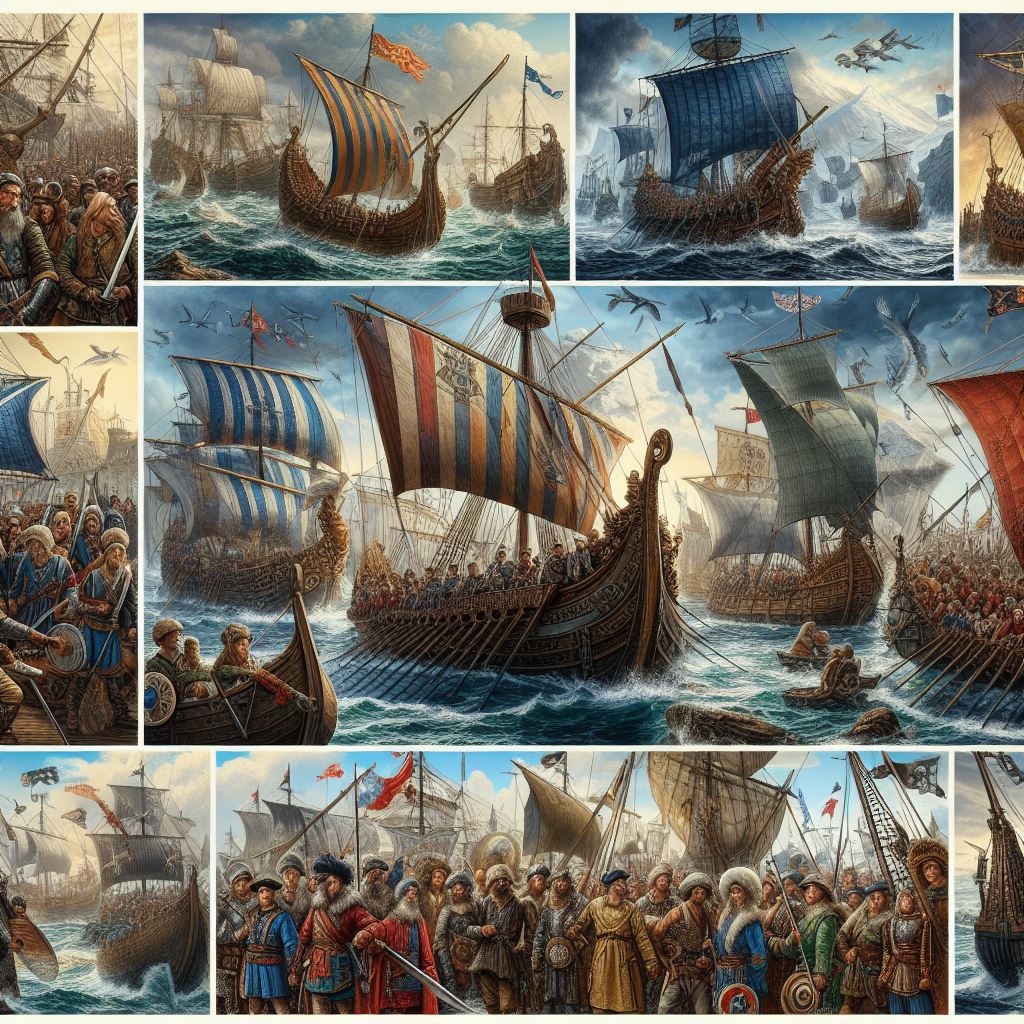
Sailing also had importance in warfare. Many times the outcome of war was decided by naval battles, the ability to move and sail faster gives advantages over enemies.
The Art of War Under Sail:
Naval warfare wasn’t just about brute force; it was a complex ballet of skill, strategy, and ship design. Imagine the iconic “line of battle,” where rival fleets lined up parallel, firing broadsides of cannons until one side surrendered or retreated. Maneuvering played a crucial role, with skilled captains like Admiral Horatio Nelson using innovative tactics to gain the upper hand. Technological advancements were constant, from the development of multi-masted warships like the Spanish galleons to the introduction of ironclad vessels that challenged the wooden ship era.
Beyond Cannons: The Human Toll and Untold Stories:
While the clash of cannons and the sight of burning ships capture the imagination, it’s vital to remember the human cost of these conflicts. Grueling conditions, brutal hand-to-hand combat, and the ever-present threat of disease made life aboard a warship perilous. Behind the grand narratives lie untold stories of individual bravery, sacrifice, and resilience. Explore the harrowing experiences of ordinary sailors, from the “powder monkeys” carrying ammunition to the surgeons battling disease in cramped quarters.
Intriguing Tales from the High Seas:
The Great Armada: In 1588, the Spanish Armada, a colossal fleet boasting galleons and galleys, set sail to conquer England. However, the English, utilizing smaller, more maneuverable ships, inflicted a decisive defeat, marking a turning point in naval history.
The American Revolution at Sea: John Paul Jones, an audacious naval commander, defied the odds with his ragtag fleet, capturing British ships and disrupting vital supply lines, proving that even underdogs could have a significant impact on the war.
The Battle of Trafalgar: This iconic 1805 clash saw Nelson’s revolutionary tactics secure a decisive victory against a larger French and Spanish fleet, solidifying British naval dominance for decades.
Use for Scientific Research
Sailing also has been important in the development of science technologies, sail Boats were used as a platform for scientific research like astronomy and cartography. The famous astronomer James Cook used a sailboat during his study of stars and to map the Pacific Ocean. Later in the 19th century, the discovery of the steam engine replaced sails as the primary population.
 |
| Sailboats used for scientific research |
Oceanographic Voyages: Throughout history, sailboats served as platforms for oceanographic research. The iconic HMS Beagle, with Charles Darwin aboard, charted the coasts of South America, leading to groundbreaking discoveries in evolution and natural history. Modern research vessels, still drawing inspiration from sailboat design, continue to explore the depths, studying marine life, currents, and climate change.
Astronomy at Sea: Early astronomers like Edmond Halley relied on sailboats for stable platforms to map the stars and celestial bodies. These observations led to advancements in navigation, calendars, and our understanding of the universe.
Mapping the Unknown: From James Cook’s expeditions in the Pacific to Robert Falcon Scott’s journey to Antarctica, countless explorers used sailboats to map uncharted territories. These voyages provided invaluable data on geography, weather patterns, and indigenous cultures, shaping our understanding of the planet.
Beyond Exploration: Scientific Instruments Take Sail:
Sailboats weren’t just vessels for travel; they became floating laboratories.
Marine Biology Comes Alive: Early marine biologists like William Beebe relied on specially designed sailboats equipped with diving chambers to study underwater life. Their observations revolutionized our understanding of marine ecosystems.
Meteorology Takes Shape: Sailboats played a vital role in the development of meteorology. By recording weather data during voyages, scientists like Matthew Maury helped map wind patterns and ocean currents, leading to safer navigation and improved weather forecasting.
Oceanography Takes Root: During the Challenger Expedition (1872-1876), a converted warship served as a mobile research platform, collecting the first comprehensive data on deep-sea life and oceanography, paving the way for future marine research.
Conclusion
Sailing, a cornerstone of maritime history, embodies the spirit of ancient mariners and their groundbreaking achievements. It’s not just a mode of travel; it’s a saga of human ingenuity, exploration, and cultural exchange. From the history of ships and boats that evolved from humble rafts to majestic vessels, to the history of sailing itself, marked by innovations in sails, navigation, and shipbuilding, this maritime odyssey reflects our unwavering pursuit of progress, trade, and discovery.
Beyond captivating narratives, sailing has demonstrably shaped cultures and economies. The ancient trade routes, established by those daring mariners, fostered the exchange of goods, ideas, and customs, weaving the fabric of interconnected societies. From the bustling ports of the Mediterranean to the spice-laden voyages of the East, sailing played a pivotal role in the rise and fall of empires, leaving an indelible mark on the global tapestry.
More than just a historical footnote, sailing continues to hold relevance today. Recreational sailing fosters a deep connection with nature, ignites the spirit of adventure, and teaches valuable lessons in resilience and self-reliance. Modern maritime industries owe their very existence to the pioneering spirit of those early seafarers, ensuring the smooth flow of global trade and transportation.
As we navigate the winds of time, understanding and appreciating the rich maritime history allows us to chart a course for the future. By harnessing the lessons learned from ancient mariners and their innovative spirit, we can continue to explore, connect, and safeguard the oceans, ensuring a sustainable future for ourselves and generations to come.
Check out our other interesting blogs:


